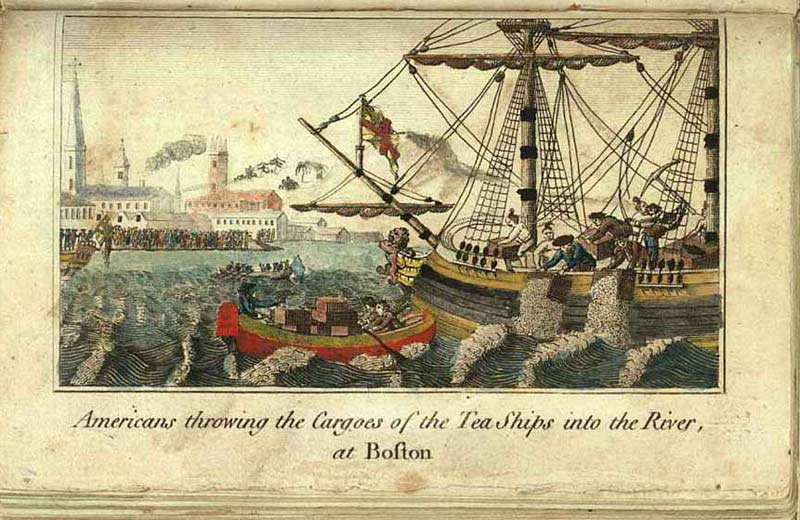“Come along inside…We’ll see if tea and buns can make the world a better place.”
Kenneth Grahame; The Wind in the Willows
The tea party is a staple of children’s literature. In The Lion, the Witch, and the Wardrobe, Lucy, on her first visit to Narnia, sits down to tea with the faun, Mr. Tumnus; in The House on Pooh Corner, Pooh and Piglet share a Very Nearly Tea (which is one you forget about afterwards) with Christopher Robin; and in Alice in Wonderland, Alice stumbles upon a peculiar and philosophically challenging tea party hosted by the maddening Mad Hatter.
January, it turns out, is National Hot Tea Month, which makes perfect sense: it’s cold outside and we’re all thinking longingly of curling up in woolly slippers with a cup of something warm. Best of all, there are many mind-broadening resources – literary, geographical, historical, philosophical, and scientific – to make the experience even better.
Table of Contents
TEA STORIES
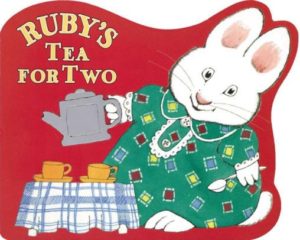 |
In Rosemary Wells’s Ruby’s Tea for Two (Viking Juvenile Books, 2003) – featuring Max and Ruby, possibly the world’s most adorable bunny siblings – Ruby and a friend are having a tea party for two and insist that Max be the waiter. (“Three!” protests Max.) For ages 1-4. |
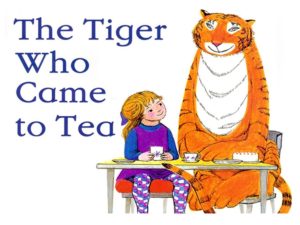 |
In Judith Kerr’s The Tiger Who Came to Tea (Candlewick, 2009), just as Sophie and her Mummy are sitting down to tea, a hungry and rambunctious tiger arrives who eats and drinks everything in the house, including all the biscuits and Daddy’s beer. For ages 3-7. |
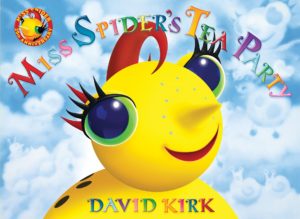 |
David Kirk’s Miss Spider’s Tea Party (Scholastic, 2007) is the tale of an almost-failed tea party: none of the insects want to attend since they all know what spiders eat. Eventually, however, one wet and stranded moth breaks the ice and the book ends with a crowd of insectile guests happily sharing tea and cupcakes. For ages 4-8. |
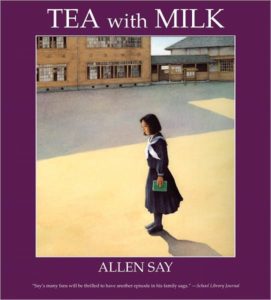 |
Allen Say’s Tea with Milk (Houghton Mifflin Harcourt, 2009) is the story of young Masako – known as May – raised in San Francisco and then moved as a teenager to Japan. There Masako struggles to find her place between her two cultures, each represented throughout the book by tea – either American-style, with milk and sugar, or plain, green, and Japanese. Eventually the independent-minded May meets a young Japanese man who likes milk in his tea too, and at the very end of the book, readers discover that these are the author’s parents. For ages 5-10. |
| Should you drink your tea with milk? Maybe not, according to the New York Times. Check out Adding Milk to Tea Destroys its Antioxidants. | |
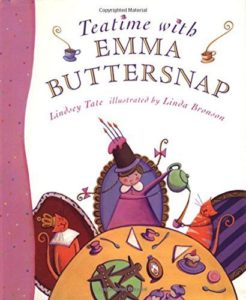 |
Lindsey Tate’s Teatime with Emma Buttersnap (Henry Holt, 1998) is a delightful and wide-ranging account of tea with the help of Emma’s well-informed English Aunt Pru, a tea aficionado. (Aunt Pru’s cats, Lapsang Souchang and Jasmine, are named after her favorite teas.) The book includes a brief history of tea, instructions for brewing tea, recipes, and an account of the Boston Tea Party. For ages 7-9. |
TEA POEMS
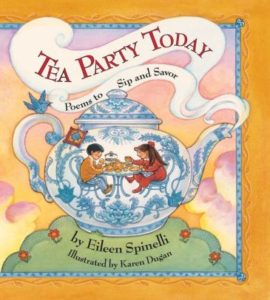 |
Eileen Spinelli’s Tea Party Today (Boyds Mills Press, 1999) is a collection of short clever illustrated poems about teatime, including “Please” – an account of tea-party manners – which features a mischievous little boy who (horrors!) sticks his finger in his teacup. For ages 4-8. |
 |
Joyce Carol Thomas’s Brown Honey in Broomwheat Tea (HarperCollins, 1995), for ages 4-9, is a lovely collection of poems celebrating African-American heritage, among them the title poem, “Brown Honey in Broomwheat Tea.” (“Broomwheat tea: good for what ails you, especially when poured by loving hands…”). For ages 4-8. |
